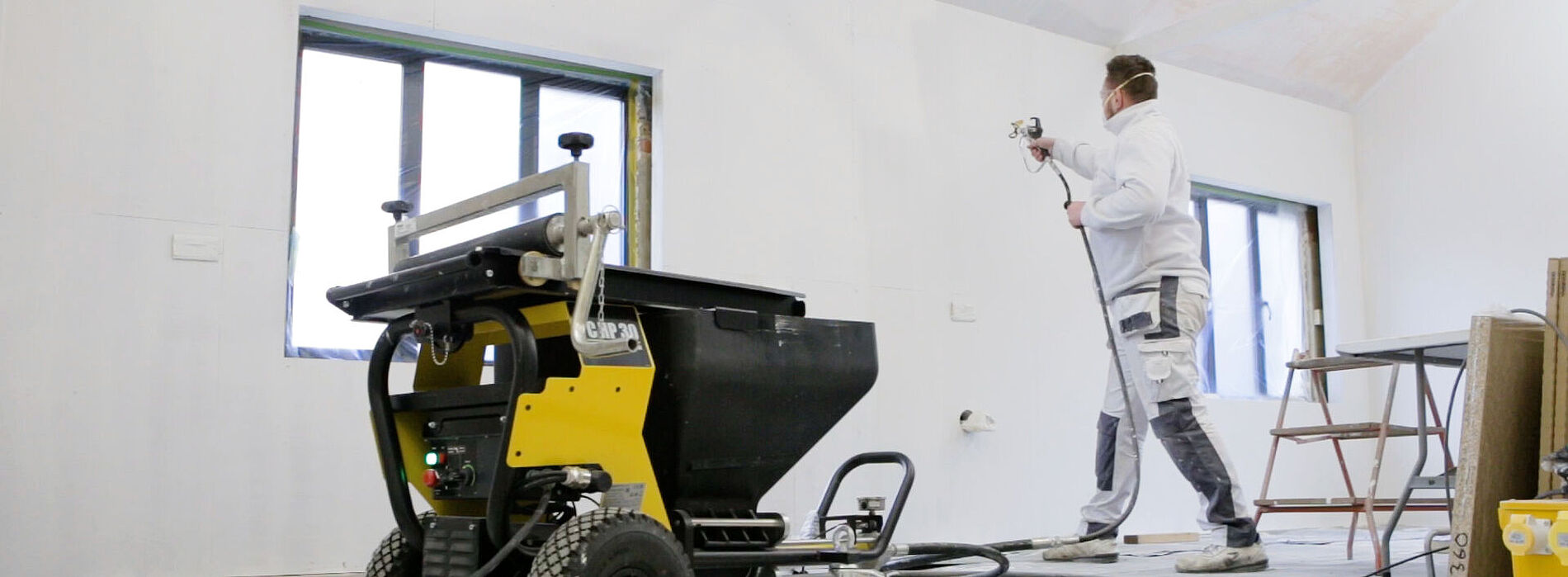Airless application of filler with glass fibre fleece
Paintshack, the owners of this newly built warehouse, wanted to ensure the walls did not suffer from shrinkage cracks as the new building settled. When using traditional gypsum plastering methods with new builds, this can be an issue, particularly where plasterboards join. After a period of time cracks can appear which need to be cut back then filled and redecorated.






